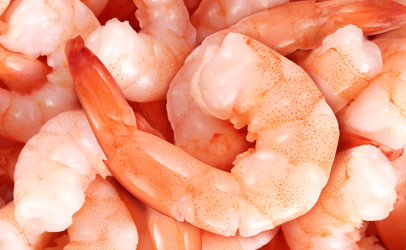 and Drug Administration will allow irradiation on crab, shrimp, lobster, crayfish and prawns to control foodborne pathogens and extend shelf life.
and Drug Administration will allow irradiation on crab, shrimp, lobster, crayfish and prawns to control foodborne pathogens and extend shelf life.After a safety assessment considered potential toxicity, the effect of irradiation on nutrients, and potential microbiological risk, the agency decided to amend current food additive regulations to allow “the safe use of ionizing radiation on crustaceans.”
The change applies to raw, frozen, cooked, partially cooked, shelled, or dried crustaceans, or cooked, or ready-to-cook, crustaceans processed with spices or small amounts of other food ingredients.
At the maximum permitted dose of 6.0 kiloGray (kGy), this new use of ionizing radiation will reducae, but not entirely eliminate, the number of pathogenic microorganisms – including Listeria, Vibrio and E. coli – in or on crustaceans.
“Irradiation is not a substitute for proper food-handling practices,” FDA pointed out. “Crustaceans treated with ionizing radiation must be stored, handled, and cooked in the same way as non-irradiated foods.”
But Food & Water Watch’s executive director, Wenonah Hauter, said that the decision “continues to show how inadequate the FDA food inspection system is, especially for imported foods” and will allow other countries “to continue to raise their seafood products in filthy and unsanitary factory fish farms since irradiation will be used as the ‘magic bullet’ to make the products safe to eat from microbiological contaminants.”
FDA has previously allowed irradiation in other foods such as poultry, meat, molluscan shellfish, iceberg lettuce and fresh spinach. The move to add crustaceans to the list is in response to a petition filed by the National Fisheries Institute (NFI) 13 years ago.
“Ionizing radiation is a proven and effective food safety technology that can now be incorporated into an already robust modern system that ensures the wholesomeness of crustaceans,” said Gavin Gibbons, NFI’s vice president for communications. “This will be another tool, in addition to existing government regulations, that companies can use to ensure the safety of their seafood. FDA has made clear that use of irradiating technology will supplement, not replace, stringent food safety standards that have led seafood to be among the safest of foods.”
The agency requires that companies identify irradiated foods on packaging, but not on multi-ingredient foods or irradiated food served in restaurants.





